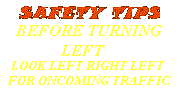| This is the basic method for double clutching: 1. Release accelerator, push in clutch and shift to neutral at the same time. 2. Release clutch. 3. Let engine and gears slow down to the RPM required for the next gear (this takes practice). 4. Push in clutch and shift to the higher gear at the same time. 5. Release clutch and press accelerator at the same time. Shifting gears using double clutching requires practice. If you remain too long in neutral, you may have difficulty putting the vehicle into the next gear. If so, don’t try to force it. Return to neutral, release clutch, increase engine speed to match road speed, and try again. Knowing When to Shift Up. There are two ways of knowing when to shift: Use engine speed (RPM). Study the driver’s manual for your vehicle and learn the operating RPM range. Watch your tachometer, and shift up when your engine reaches the top of the range. (Some newer vehicles use “progressive” shifting: the RPM at which you shift becomes higher as you move up in the gears. Find out what’s right for the vehicle you will operate.) Use road speed (mph). Learn what speeds each gear is good for. Then, by using the speedometer, you’ll know when to shift up. With either method, you may learn to use engine sounds to know when to shift.
|
|
Basic Procedures for Shifting Down Special conditions where you should downshift are: |
| You can click on the safety tips for more information. For the UPDATED Practice Quizzes click Here For the UPDATED Practice Quizzes click Here |

Custom Search
|
